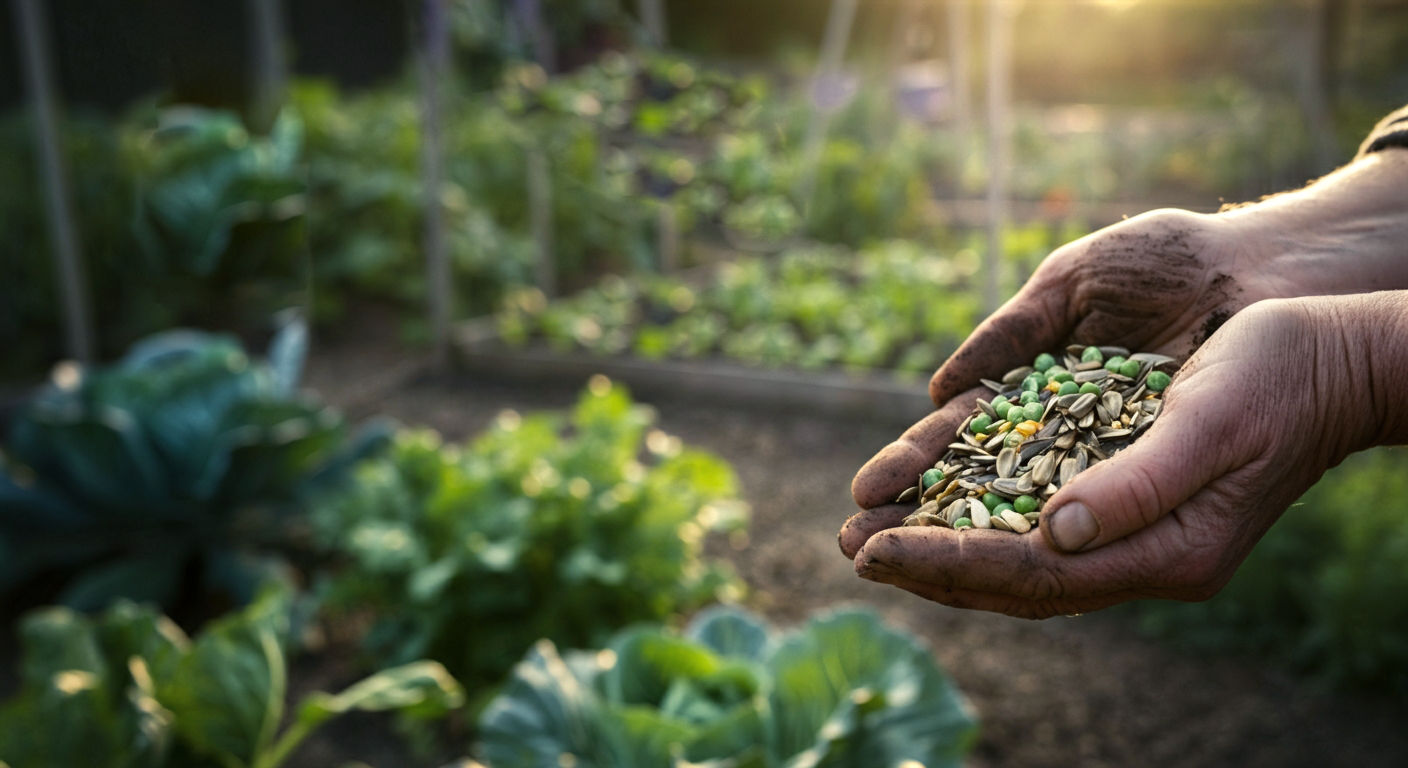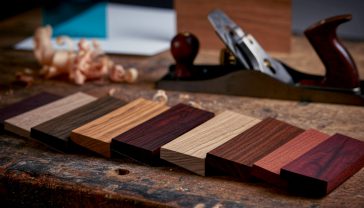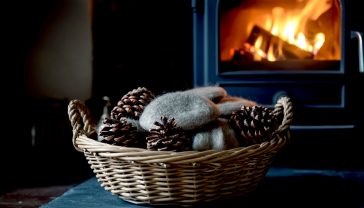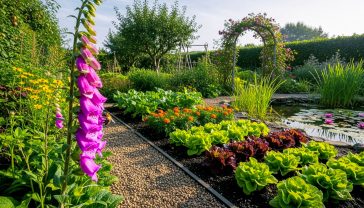The Guide to Organic Seed Selection: A Foundation for Healthy Growth
Discover why choosing organic seeds is the first step to a healthier, more resilient garden. Our complete UK guide covers everything you need to know.

This post may contain affiliate links. If you make a purchase through these links, we may earn a commission at no additional cost to you.
Gardening is one of Britain’s great passions. Whether you’ve got a sprawling country garden, a tidy allotment, or a few pots on a city balcony, the magic of turning a tiny seed into something you can eat is a feeling that never gets old. But before you even think about getting your hands dirty, there’s a crucial decision to make: what kind of seeds will you sow?
For a growing number of gardeners, the answer is simple: organic. It’s a choice that goes far beyond a simple label. Choosing organic seeds is about connecting with a tradition of gardening that works with nature, not against it. It’s about growing healthier, more resilient plants and, ultimately, more delicious and nutritious food.
This guide is your complete map to the world of organic seeds in the UK. We’ll dig into what ‘organic’ really means, why it matters for your garden, and how to choose the perfect seeds for your patch of green. Forget confusing jargon and complicated science; we’re going to break it all down, step-by-step, so you can start your organic gardening journey with confidence.
What Does ‘Organic Seed’ Actually Mean?
In the UK, the word ‘organic’ isn’t just a buzzword; it’s a legally protected term. For a seed to be sold as organic, it must come from a plant that was grown according to a strict set of rules. Think of it as a plant’s CV – it tells you exactly how it was raised.
The parent plant must have been grown in soil that hasn’t been treated with synthetic (man-made) pesticides, herbicides, or fertilisers for several years. Instead of chemical sprays, organic farmers use clever, natural methods to keep pests and diseases at bay. They might use companion planting, where certain plants are grown together to protect each other, or encourage beneficial insects like ladybirds to gobble up aphids.
Key organisations like the Soil Association are the gold standard for organic certification in the UK. When you see their logo on a packet of seeds, you know it’s met the highest possible standards.
Organic vs. Non-Organic Seeds: What’s the Difference?
So, what separates an organic seed from a regular one? It comes down to two things: how the parent plant was grown and how the seed itself is treated.
| Feature | Organic Seeds | Conventional (Non-Organic) Seeds |
|---|---|---|
| Parent Plant | Grown in certified organic soil, without synthetic chemicals. | Often grown using synthetic fertilisers and pesticides. |
| Pest Control | Natural methods like crop rotation and beneficial insects. | Chemical pesticides and herbicides are commonly used. |
| Genetic Makeup | Never genetically modified (non-GMO). | Can be from genetically modified plants. |
| Seed Treatment | Untreated, or treated with natural, approved substances. | Often coated with chemical fungicides or insecticides. |
You might notice that some non-organic seeds have a colourful, powdery coating. This is often a chemical treatment designed to protect the seed from fungal diseases as it germinates. Organic seeds are never treated with these synthetic chemicals. They rely on their own natural resilience to sprout and grow, which is a good thing. It means they are starting life strong, without a chemical helping hand.
Why Choose Organic Seeds? Three Big Reasons
You might be thinking, “Does it really matter? A seed is a seed, right?” Well, yes and no. While any seed has the potential to grow, choosing organic gives you, your garden, and the planet a significant head start.
1. They’re Better for the Environment
This is the big one. Organic farming is a kinder way of growing. By avoiding synthetic chemicals, organic seed producers help protect our precious soil, keep our water clean, and support biodiversity. The fields where organic parent plants grow are buzzing with life – from worms and microbes in the soil to bees and butterflies in the air. When you buy organic seeds, you’re casting a vote for a healthier planet.
2. They’re Bred for Organic Conditions
This is a really clever bit. Organic seeds come from plants that have thrived in an organic system. They haven’t been propped up by chemical fertilisers or saved from every little bug by a blast of pesticide. This means they’ve had to be naturally tough and resilient.
Think of it like this: if you wanted to train for a marathon, you wouldn’t spend all your time sitting on the sofa. You’d get out and run! Organic plants have done the “training.” They’ve learned to find nutrients in the soil and fight off pests on their own. The seeds they produce carry that strength with them. When you plant them in your own organic garden, they’re already adapted to that way of life and are often better equipped to handle challenges like pests or poor weather.
3. They Support a Sustainable Food System
By choosing organic, you’re supporting the farmers and small businesses who are committed to growing in a way that’s good for people and the planet. You’re helping to build a food system that values healthy soil, biodiversity, and long-term sustainability over short-term chemical fixes.
Navigating the Seed Packet: A Gardener’s Guide
Walking into a garden centre or browsing an online seed catalogue can be overwhelming. There are so many varieties! But don’t worry, the packet itself is full of clues to help you choose. Let’s decode it.
Open-Pollinated, Heirloom, or F1 Hybrid?
This is probably the most confusing part of seed shopping, but it’s actually quite simple once you know the lingo.
Open-Pollinated (OP) Seeds
These are the traditionalists of the seed world. Open-pollinated plants are pollinated naturally, by wind, insects, or birds. Because the pollination is a bit of a lucky dip, you get a lovely variety of plants. They’ll all be the same type of vegetable – a carrot will still be a carrot – but you might get slight differences in size, shape, or even colour.
The best thing about OP varieties is that you can save the seeds from your harvest and plant them the next year. The new plants will grow ‘true to type,’ meaning they’ll be very similar to their parents. This is how gardeners have saved seeds for centuries, and it’s a brilliant way to be more self-sufficient.
Heirloom Seeds
Heirloom seeds are a special type of open-pollinated seed. Think of them as living antiques. They are varieties that have been passed down through generations of families and gardeners, usually for at least 50 years.
Why bother with old varieties? Because they are packed with flavour and history! Many heirlooms were saved because they tasted amazing, were incredibly reliable, or grew particularly well in a specific local area. Varieties like the ‘Mortgage Lifter’ tomato or the ‘King of the Pippins’ apple have fascinating stories behind them. Growing heirlooms is like growing a piece of history. In the UK, organisations like the Heritage Seed Library work to protect these precious varieties from being lost forever.
F1 Hybrid Seeds
Now for the modern ones. F1 Hybrids are created by cross-pollinating two different, carefully chosen parent plants. This isn’t genetic modification; it’s more like selective matchmaking. The goal is to combine the best traits of both parents into one ‘super’ offspring (the F1 generation).
F1 Hybrids are often very vigorous, uniform (all the plants look the same), and high-yielding. They are the varieties most often used in commercial farming for this reason. However, there’s a catch. If you save the seeds from an F1 Hybrid plant, the next generation (called F2) will be a mixed bag. You won’t get plants that are the same as the parent. It’s a bit like how two tall parents can sometimes have a shorter child; the genes get jumbled up. This means you have to buy new F1 seeds every year.
For an organic gardener, open-pollinated and heirloom seeds are usually the best choice. They allow you to save your own seeds, adapt plants to your specific garden over time, and preserve genetic diversity.
Understanding Seed Packet Symbols and Terms
Let’s look at the other information on the packet.
- Sow By Date: Seeds don’t last forever. This date tells you when the seeds are at their best. Older seeds might still grow, but you’ll likely have fewer seedlings pop up (lower germination rate).
- Sun/Shade Requirements: This is vital! ‘Full sun’ means at least 6-8 hours of direct sunlight a day. ‘Partial shade’ means about 4-6 hours. Don’t try to grow a sun-loving tomato in a shady corner – you’ll both be disappointed!
- Sowing Instructions: This will tell you when to sow (e.g., March-May), how deep to plant the seed, and the ideal spacing between plants. Follow this closely! If plants are too crowded, they’ll compete for light and nutrients and won’t grow well.
- Days to Germination: How long it should take for the seedling to appear. This can vary depending on the temperature.
- Days to Maturity/Harvest: A rough guide for when you can expect to be eating your crop.
Choosing the Right Organic Seeds for Your British Garden
Now for the fun part: choosing what to grow! The secret to a successful garden is to pick plants that will be happy in your specific conditions. A gardener in the chilly Scottish Highlands will have different challenges to someone on the sunny coast of Cornwall.
Know Your Climate and Soil
The UK’s weather is, shall we say, unpredictable. But there are general patterns. Consider how much sun your garden gets, whether it’s exposed to strong winds, and how long your growing season is. The further north you are, the shorter and cooler your summer will be. Look for varieties described as ‘hardy’, ‘early maturing’, or ‘good for cooler climates’.
Soil is just as important. Is your soil heavy clay, sandy, or a nice loamy mix? Some vegetables, like carrots, hate heavy clay and will grow much better in sandy soil or a raised bed. You can improve your soil over time with lots of compost, but it’s always wise to start with plants that are a good match for what you have.
What’s Your Gardening Style?
Be realistic about the space and time you have.
- Container Gardening: If you’re growing on a patio or balcony, look for ‘dwarf’, ‘compact’, or ‘patio’ varieties. Things like bush tomatoes, tumbling cherry tomatoes, cut-and-come-again lettuce, and herbs are perfect for pots.
- Small Gardens & Allotments: You can pack a lot into a small space. Think about vertical growing – climbing beans, peas, and cucumbers on a trellis. Intercropping, where you plant fast-growing crops like radishes between slow-growing ones like brassicas, is another great space-saving trick.
- Low-Maintenance Gardening: If you’re short on time, choose crops that don’t need a lot of fuss. Potatoes, garlic, onions, and perpetual spinach are all great ‘plant and forget’ options (well, almost!).
Top Organic Varieties for UK Gardens
Here are some tried-and-tested heirloom and open-pollinated varieties that perform brilliantly in British conditions.
For the Salad Bowl:
- Lettuce ‘Tom Thumb’: A tiny, buttery heirloom lettuce that’s perfect for small spaces and pots.
- Radish ‘French Breakfast’: A classic, quick-growing radish with a lovely mild, peppery flavour.
- Spring Onion ‘White Lisbon’: A very reliable and hardy variety that you can sow almost all year round for a continuous supply.
For the Veg Patch:
- Pea ‘Kelvedon Wonder’: An early and heavy-cropping pea. It’s a dwarf variety, so it doesn’t need much support. A real British favourite.
- Broad Bean ‘Aquadulce Claudia’: Incredibly hardy. You can sow this in the autumn for a super-early crop the following spring.
- Beetroot ‘Boltardy’: The name says it all. This variety is famous for being resistant to ‘bolting’ (flowering too early), which is a common problem in changeable British weather.
- Carrot ‘Early Nantes’: A reliable and sweet stump-rooted carrot that does well even in heavier soils.
- Kale ‘Red Russian’: A very hardy and attractive kale with purple stems. It will keep you supplied with healthy greens right through the winter.
For a Taste of Summer:
- Courgette ‘Black Beauty’: A classic, easy-to-grow courgette that produces masses of dark green fruits. Just be warned – you’ll have plenty to give away!
- Tomato ‘Gardener’s Delight’: An old favourite for a reason. It produces trusses of sweet, tangy cherry tomatoes and performs well outdoors in a sunny, sheltered spot.
- Runner Bean ‘Painted Lady’: A beautiful heirloom with red and white flowers. It’s a reliable cropper and the beans have a wonderful flavour.
Where to Buy Organic Seeds in the UK
You won’t always find a huge selection of organic seeds in the big DIY stores. For the best range, it’s worth seeking out specialist suppliers.
- Online Seed Companies: This is where you’ll find the real treasures. Companies like The Real Seed Catalogue, Vital Seeds, and Seed Co-operative are fantastic UK-based suppliers who specialise in open-pollinated, heirloom, and organic seeds. They often provide incredibly detailed growing advice for each variety.
- Local Garden Centres: Independent garden centres often have a better selection of organic and unusual seeds than the big chains. It’s always worth a look.
- Seed Swaps: Look out for local seed swaps, often organised by gardening clubs or allotment associations. These are a brilliant, low-cost way to get seeds that are already proven to grow well in your local area.
Sowing and Growing: Giving Your Organic Seeds the Best Start
You’ve chosen your seeds – now it’s time to bring them to life. The principles of growing from seed are the same whether they’re organic or not, but with organic seeds, we’re focusing on creating a healthy, natural environment from day one.
The Perfect Potting Mix
Your baby seedlings need a good start. You can buy bags of organic, peat-free seed compost, or you can make your own. A good mix is one-third compost (from your own bin is best!), one-third topsoil or loam, and one-third sharp sand or perlite for drainage. The key is a fine, crumbly texture that holds moisture but doesn’t get waterlogged.
Sowing with Care
- Read the Packet: This is rule number one! It will tell you the best time and method for sowing.
- Don’t Sow Too Deep: A good rule of thumb is to plant a seed to a depth of about twice its own diameter. Tiny seeds like lettuce can just be sprinkled on the surface and very lightly covered.
- Water Gently: Use a watering can with a fine rose or a gentle spray to avoid washing your seeds away. Keep the compost damp, but not soaking wet.
- Provide Light and Warmth: Most seeds need warmth to germinate. A sunny windowsill is perfect for many. Some, like tomatoes and peppers, will appreciate a heated propagator to get them going. Once the seedlings appear, they need lots of light to grow strong and straight.
From Seedling to Sturdy Plant
As your seedlings grow, they’ll need a bit of care.
- Thinning Out: If you sowed more than one seed in a pot or a row, you’ll need to thin them out, leaving only the strongest seedling. It feels cruel, but if you don’t, they will all be weak and spindly. You can eat the thinnings of things like beetroot and lettuce!
- Hardening Off: Before you plant your seedlings out into the garden, you need to get them used to the great outdoors. This is called ‘hardening off’. For a week or two, put them outside during the day and bring them back in at night. This toughens them up so they don’t get a shock from the wind and colder temperatures.
- Feeding Naturally: Your plants will get most of their food from the healthy, compost-rich soil you’ve planted them in. You can give them an extra boost during the growing season with a natural liquid feed, like home-made comfrey tea or a certified organic seaweed feed.
Saving Your Own Seeds: The Ultimate Step in Organic Gardening
One of the most rewarding parts of growing open-pollinated and heirloom varieties is saving your own seeds. It’s the ultimate act of self-sufficiency and it allows you to create your own unique varieties that are perfectly adapted to your garden.
Easy Seeds to Start With
Some plants are much easier for beginners to save seeds from than others. The best ones to start with are those that self-pollinate.
- Peas and Beans: These are the easiest of all. Simply leave a few pods on your healthiest plants to mature and dry out. Once the pods are brown and crisp, you can shell them and store the seeds in a cool, dry place.
- Tomatoes: Let a perfect-looking tomato get really ripe. Scoop out the seeds and the jelly-like pulp into a jar. Add a little water and leave it for a few days to ferment. This process kills off any seed-borne diseases. The good seeds will sink to the bottom. Rinse them well, spread them on a plate to dry, and then store.
- Lettuce: Let one or two of your best lettuce plants ‘bolt’ (send up a flower stalk). The flowers will eventually turn into fluffy seed heads, like a dandelion clock. Once they are mostly dry and fluffy, shake the heads into a paper bag to collect the seeds.
Saving seeds connects you to the ancient rhythm of the gardening year. It’s a skill that has been passed down for generations, and by learning it, you’re playing a part in preserving our precious horticultural heritage.
The Future is Organic
Choosing organic seeds is more than just a gardening technique; it’s a philosophy. It’s about seeing your garden as part of a wider ecosystem, a place where soil, plants, insects, and people can all thrive together.
It starts with a simple choice – picking up a packet of seeds. But that small act has a ripple effect. It supports farmers who care for the land. It protects the biodiversity of our planet. And it puts the very best, most resilient, and most flavourful food on your plate.
So next time you’re planning your garden, take a moment to think about the seeds you’ll choose. By starting with organic, you’re not just planting a seed; you’re planting the foundations for a healthier garden and a healthier world.
Further Reading
For those looking to dig even deeper, these UK-based organisations are fantastic resources:
- The Soil Association: The UK’s leading organic certification body. Their website is full of information on organic standards and principles.
- Garden Organic: A UK charity dedicated to promoting organic gardening. They run the Heritage Seed Library.
- The Royal Horticultural Society (RHS): A treasure trove of reliable, research-backed gardening advice tailored for UK climates.
- The Real Seed Catalogue: An excellent independent UK company with a huge range of open-pollinated and heirloom seeds and fantastic growing guides.






